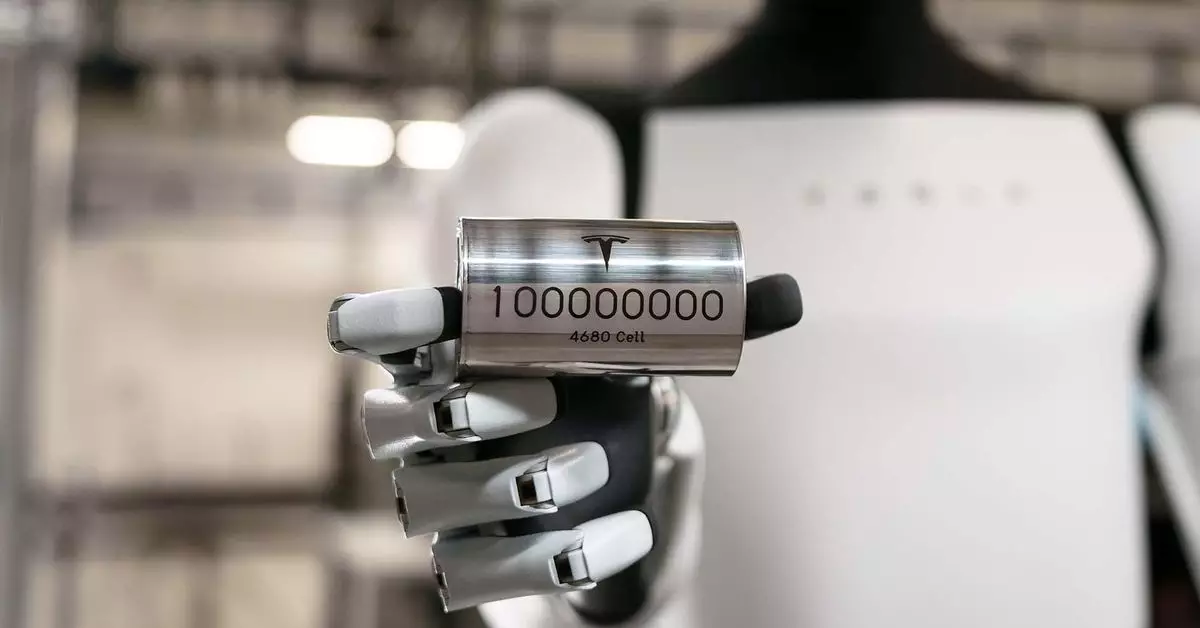Elon Musk, the dynamic CEO of Tesla, is known for his audacious goals and groundbreaking innovations in the electric vehicle (EV) sector. A significant part of Musk’s strategy revolves around the 4680 cylindrical battery cells, which he claims can deliver substantial improvements in energy capacity, potentially revolutionizing EV performance. These “tabless” cells, expected to enhance the efficiency of Tesla’s vehicles—most notably the elusive Cybertruck—represent a bold leap into the future of automotive technology. But the optimism surrounding these cells is clouded by skepticism from industry insiders.
One of the most vocal critics of Musk’s vision is Robin Zeng, the founder and chairman of Contemporary Amperex Technology Co., Limited (CATL), the world’s largest EV battery manufacturer. Zeng has publicly questioned Musk’s understanding of battery technology, asserting that the CEO lacks the expertise necessary to succeed with the 4680 cells. This skepticism isn’t merely speculative; it stems from direct discussions between the two at a forum in China, where Zeng claims his arguments left Musk without a logical rebuttal. The disparity in their perspectives raises essential questions about the feasibility of Musk’s ambitious timelines and the realities of battery production.
While Tesla touts the production of 100 million 4680 cells, it faces hurdles of cost, efficiency, and scalability. Reports suggest that Musk has set a high-stakes deadline for his team to address these crucial issues as the year draws to a close. In contrast, CATL’s lithium iron phosphate (LFP) batteries are already being integrated into a wide array of vehicles from Tesla and competitors, such as Ford’s Mustang Mach-E and F-150 Lightning. Zeng’s battery technology, although not delivering the same energy range as Tesla’s cylindrical counterparts, offers advantages in cost-effectiveness and safety—factors that could sway consumer choice in the highly competitive EV market.
An underlying theme in Zeng’s commentary is the critique of Musk’s tendency to overpromise timelines. This proclivity has been observed across various Tesla projects, from the advent of Full Self-Driving technology to the rollout of new manufacturing techniques. Zeng’s cautionary note—arguing that ambitious projects often take longer than Musk’s expedited timelines suggest—highlights a critical flaw in the entrepreneurial approach: the interplay between vision and practicality. Ensuring the long-term success of any technology, especially one as complex as EV batteries, requires not just innovation but also the patience to allow that innovation to mature and succeed in real-world applications.
As the battle for supremacy in the EV battery market intensifies, the divergent paths of Tesla and CATL will undoubtedly shape the future of electric mobility. While Musk’s 4680 cells promise a formidable evolution of energy storage, the practicality of such aspirations must contend with the realities of manufacturing and technology development. On the other hand, CATL’s sustainable approach may serve as a stabilizing force in the industry, keeping pace with consumer demand while potentially outlasting the high-flying promises of its competitors. The journey ahead will not only test the mettle of these innovators but will also dictate the direction of the EV revolution as a whole.

